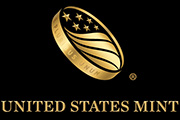Memories from the National Sites
Lesson Plan
Overview
The teacher will introduce the concept of postcard writing. Students will then research the national sites and states highlighted on quarters for that year. Students will take a virtual visit to the parks and then write a virtual postcard or create a virtual scrapbook of their trip.
Objectives
Students will demonstrate an understanding of postcard writing.
Time
Two 20- to 30-minute sessions
Materials List
- 1 overhead projector (optional)
- 1 overhead transparency (or photocopy) of the "What Did I See?" worksheet
- "What Did I See?" worksheet
- 1 class map of the United States
- 1 copy of a text that gives information about letters
- Chart paper
- Markers
- Crayons
- Digital storytelling software
- Computer
Keywords
- Greeting
- Body of a letter
- Closing
- National Sites
Summary
- Read the students a text on letter writing. Explain that a shorter way to write a letter is to use a postcard. Model writing a postcard. Note that some postcards have pictures on one side.
- Describe the America the Beautiful Quarters® Program for background information. The program is described at usmint.gov/mint_programs/atb. Tell the students that the back of a coin is called the reverse, and "obverse" is another name for the front.
- With the students, examine each of the five quarter designs for a given year. Locate each of the sites on a class map. Note their position in relation to your school's location. Answer any student questions. Demonstrate how to explore the websites of the national sites, using a national park in your own state as an example.
- Introduce the students to the "What Did I See?" worksheet. Explain that they are to choose at least three things that they would see at the site to write about on their virtual postcard. Allow them computer time to research one of the featured sites. Have the students record their findings on the worksheet.
- Have the students complete the virtual postcard/scrapbook project using their "What Did I See?" worksheets and a template you provide in a chosen software program. Have them include three pictures on the "front" of the postcard with descriptive labels or captions. Make sure to point out that descriptive words help those reading their work to picture what they saw.
- Present the postcards or scrapbooks to the class.
Assessment
- Take anecdotal notes about the students' participation in class discussions.
- Use the students' worksheets and projects to evaluate whether they've met the lesson objectives.
Differentiated Learning
- Allow students to work in pairs.
- Allow students to use a scribe to label their worksheets.
- Allow students to use a template to complete the project.
Connection to www.usmint.gov/kids
- Have students use virtual coins to create greeting cards you can print and color by playing Plinky's Create-A-Card at www.usmint.gov/kids/games/plinkysCreateACard/.
- Have students choose words and pictures to design their own coins by playing "Making Change" at www.usmint.gov/kids/games/makingChange/.
Standards
English
National Council of Teachers of English (www.ncte.org) and International Reading Association (www.reading.org)
- Students apply a wide range of strategies to comprehend, interpret, evaluate, and appreciate texts. They draw on their prior experience, their interactions with other readers and writers, their knowledge of word meaning and of other texts, their word identification strategies, and their understanding of textual features (e.g., sound-letter correspondence, sentence structure, context, graphics).
- Students employ a wide range of strategies as they write and use different writing process elements appropriately to communicate with different audiences for a variety of purposes.
- Students apply knowledge of language structure, language conventions (e.g., spelling and punctuation), media techniques, figurative language, and genre to create, critique, and discuss print and non-print texts.
- Students conduct research on issues and interests by generating ideas and questions, and by posing problems. They gather, evaluate, and synthesize data from a variety of sources (e.g., print and non-print texts, artifacts, people) to communicate their discoveries in ways that suit their purpose and audience.
- Students use a variety of technological and information resources (e.g., libraries, databases, computer networks, video) to gather and synthesize information and to create and communicate knowledge.
- Students use spoken, written, and visual language to accomplish their own purposes (e.g., for learning, enjoyment, persuasion, and the exchange of information).
Technology
International Society for Technology in Education (ISTE- www.iste.org)
- Research and Informational Fluency: Students apply digital tools to gather, evaluate, and use information.
United States Department of Education National Technology Plan
Helpful Hints
- Make sure to model for the students how to write a postcard.
- Complete a sample of the "What Did I See?" worksheet ahead of time.
- Use bookmarks for differentiation with the students who need a little more guidance.
- Create a template on the software program you will be using to help students complete the virtual postcard writing and virtual scrapbook creation.
Objectives
You will write a virtual postcard telling of at least three things you saw in your chosen national site or you may create a five-page virtual scrapbook telling of your visit to the park.
Step-By-Step Directions
- Use the links on www.nps.gov to choose a site you want to visit virtually and explore through the images on that site.
- Record at least three things you saw at the site on your "What Did I See?" worksheet.
- Choose whether you want to write a postcard or create a five-page scrapbook of your visit to the park.
- Remember that each postcard must include a greeting, body, and closing. Each scrapbook should include both drawings and words telling what you saw on your virtual visit.
- Create your virtual postcard or scrapbook on the computer using the information gathered on your "What Did I See?" worksheet.
- Present your project to the class when it is complete.



